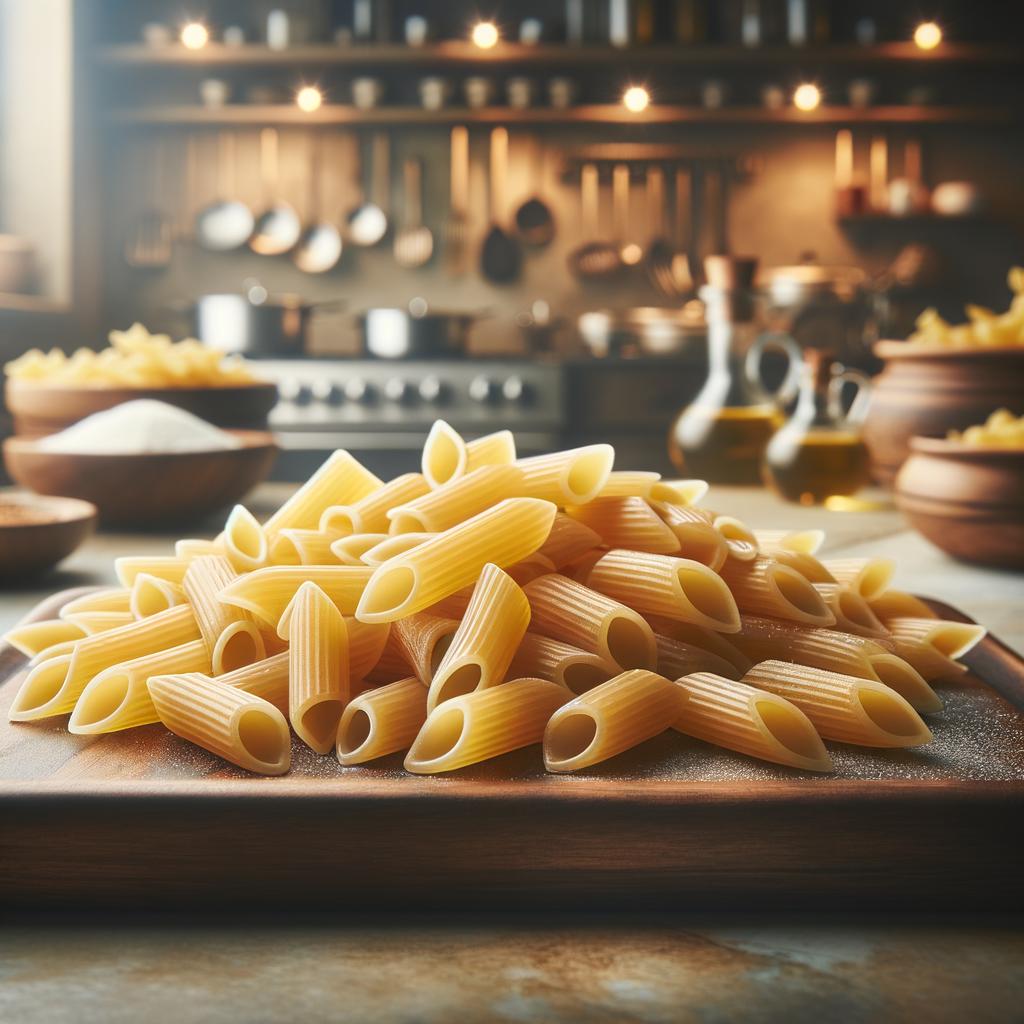Mostaccioli Pasta

Description
Mostaccioli, a beloved ingredient in the world of pasta, boasts a robust and hearty structure. These small, tube-shaped pieces of pasta are typically smooth, but can also be found ridged, known as Mostaccioli Rigati. Their cylindrical bodies, slightly wider than a common penne, are cut diagonally at the ends, resembling old-fashioned quill pens. The flavor profile of mostaccioli is delicate and slightly nutty, providing a perfect canvas for various sauces and ingredients. What sets mostaccioli apart from its pasta brethren is its ability to hold onto sauces with its unique shape, ensuring each bite is packed with flavor.
Primary Uses
Mostaccioli is a versatile player in the culinary world, acting as the star in many Italian dishes. Its structure allows it to be used in an array of recipes, from baked mostaccioli, smothered in marinara and melted mozzarella, to pasta salads, tossed with fresh vegetables and tangy vinaigrettes. It's also a popular choice for pasta casseroles, as it holds its shape well under heat and can absorb a variety of flavors. Beyond the culinary realm, mostaccioli holds a special place in Italian weddings, often served as part of the traditional feast.
History
The history of mostaccioli takes us back to the culinary heartland of Italy. Its name, derived from the Italian word "mostaccio", meaning "mustache", or "moustache", is a nod to its unique shape. The pasta has been a staple in Italian households for centuries, with its use dating back to the Roman Empire. Over time, immigrants brought mostaccioli to the United States, where it became a staple in Italian-American cuisine. There's an old Italian saying that goes, "Pasta waits for no one", and with mostaccioli, it's easy to see why; its simplicity and versatility have made it a timeless favorite.
Nutritional Information
Mostaccioli, like other pastas, is a good source of carbohydrates, providing energy for the body. A single serving contains around 200 calories, with the majority coming from carbs. It also provides a modest amount of protein, making it a good option for those looking for a meat-free source of this important macronutrient. Mostaccioli is typically low in fat and contains no cholesterol. When compared to whole wheat pasta, mostaccioli may be lower in fiber, but it still offers a range of essential nutrients. Enjoying mostaccioli as part of a balanced diet can provide sustenance and satisfaction, just as it has for countless pasta lovers throughout history.

